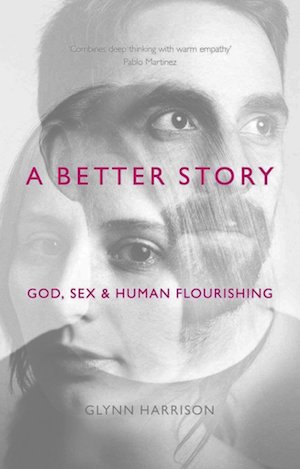Since the 1960s, we have been living through a sexual revolution.
In the space of just a few decades the Christian moral vision, which had buttressed the ancient institutions of marriage and family for centuries, effectively collapsed. And most people today would think good riddance (xiv).
So writes Christian psychiatrist Glynn Harrison in his 2017 book, A Better Story.
Harrison’s contention is that the sexual revolution has been so effective because it is built around a powerful story. Here is how he summarises it:
For centuries, traditional morality had us – all of us – in its suffocating grip. Year after year the same old rules, chained to the past, heaped shame on ordinary men and women (and boys and girls) whose only crime was being different. Enemies of the human spirit, these bankrupt ideologies befriended bigots and encouraged the spiteful. They nurtured a seedbed of hypocrisy and offered safe havens to perpetrators of abuse.
No more. Change is here. We are breaking free from the shackles of bigotry and removing ourselves from under the dead hand of tradition. Our time has come. A time to be ourselves. A time to be truly who we are. A time to celebrate love wherever we find it. A time for the human spirit to flourish once again. And if you people won’t move out of our way, we are going to push you out of our way (51).
Powerful, isn’t it?
Harrison unpacks this story, noting its ‘heroic individualism’, its ‘redemptive trajectory’ and its ‘clear moral vision’ (52-54, 179), and the way in which it is told so compellingly through films and personal testimony.
How should Christians respond to this? According to Harrison,
you can’t out-fact a story. You need to tell a different story. Or, we might add, a better story (46).
Having examined the sexual revolution in Part 1, Part 2 of the book offers a critique. This is first directed inwards, with a critique of the fear, shame and hypocrisy that have often marked Christian approaches to sexuality. The critique is then directed towards the sexual revolution:
But as time passes by, it’s becoming ever more clear that the sexual revolution has failed as well. Far from having more and better sex, people’s sex lives are as confused today as they ever have been. The retreat from marriage has affected the poorest communities most seriously, heaping injustice on the vulnerable and especially our children. The pornographication and sexualization of childhood is a tragedy unfolding before our eyes. Modern confusion over questions of identity has left a frightening emptiness at the centre of what it means to be human and, looking to the future, nobody seems to know what the end game will be (180-181, cf. 90-122).
In Part 3, Harrison lays the ground for ‘a better story’. This involves finding our identity in relation to God, and finding our own stories within the bigger story of God and humanity. This is a love story, looking towards its fulfilment in the ‘marriage … between Christ and his bride, the church’ (137). Our sexual desires and relationships fit into this.
In fact, the biblical picture of marital sexual union is nothing less than an anticipation of an even deeper union with the Divine (137).
This can be seen in three ways.
First, our sexual attractions and desires … show us the passionate nature of God’s love. …
Second, sex is a picture of the faithful character of God’s love. …
Third, our sexuality embodies the fruitful nature of God’s love. The sex act, by its very nature, is open to the creation of new life, and the architecture of marriage sets in place the conditions that will nurture and develop that new life. … No other form of sexual union has the potential to bear children. And no other union offers a full picture of the complementary nature of reconciliation – the coming together of earth and heaven, of God with his people, of Christ with his bride (152-155).
One key feature about this story is that it is directed towards the future. Our lives in the present will be marked by brokenness and a lack of fulfilment. This is true for everyone, including those who are married.
The road to flourishing is the way of the cross. Submitting to God – learning to be his creature – is hard, especially in today’s culture of entitlement. But at the cross we see that God is good; we can trust him even when goodness is hard to see. And, enduring to the end, we shall see the face of God (134).
The invitation to live within God’s story is therefore an invitation to an adventure of discovery: discovering who we are, not by looking within, but by looking to the God who made us, who redeemed us, and who is committed to refashioning us in his image. It is an invitation to a life of sacrifice and self-denial. And it is an invitation to keep ourselves pure, seeking satisfaction in God’s love, and awaiting the day when our deepest longings will be satisfied in the limitless love and joy of God’s life, within the new creation. This, to me at least, seems like a better story.
(Update: see below for some videos presenting similar material.)
